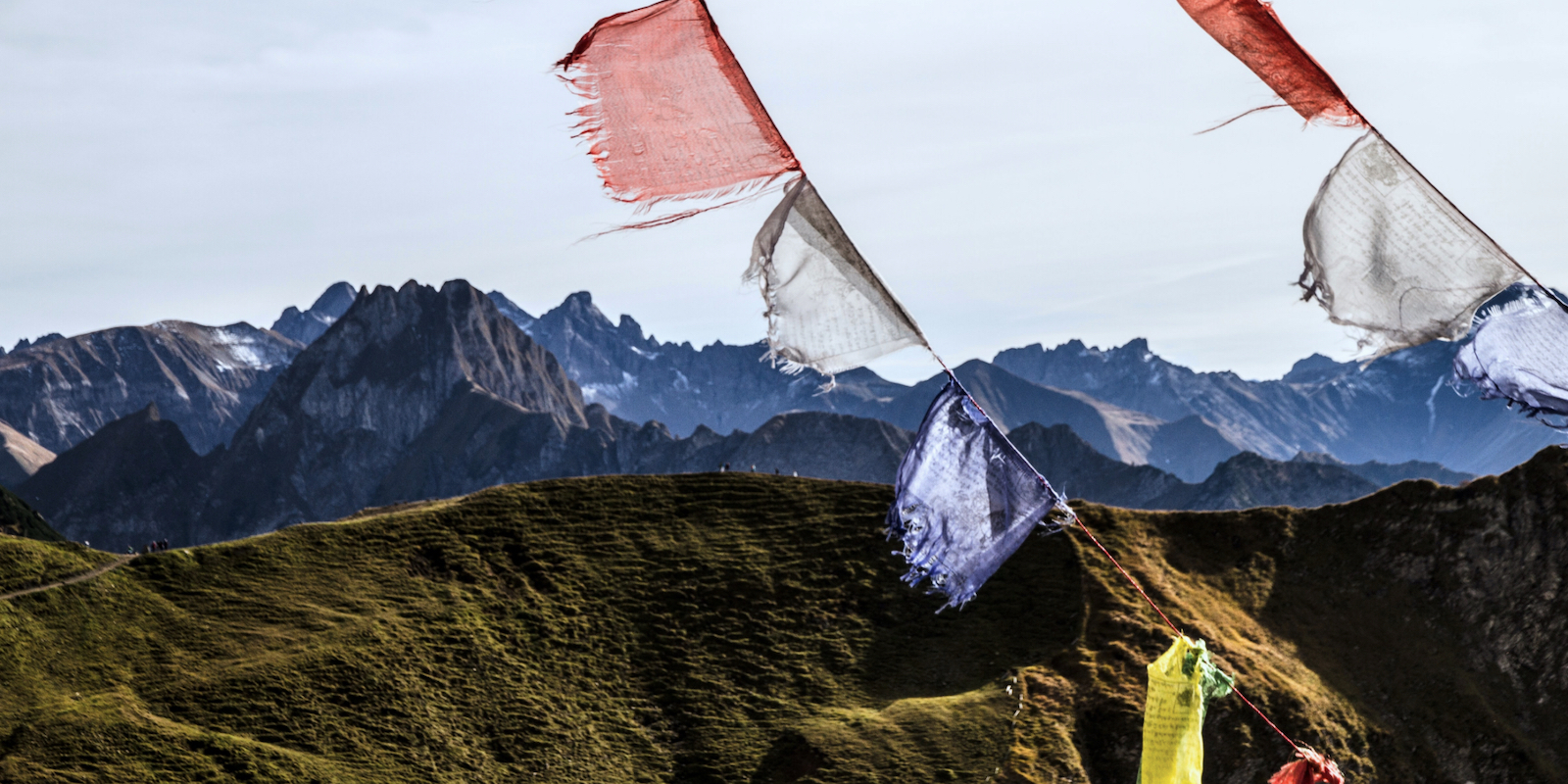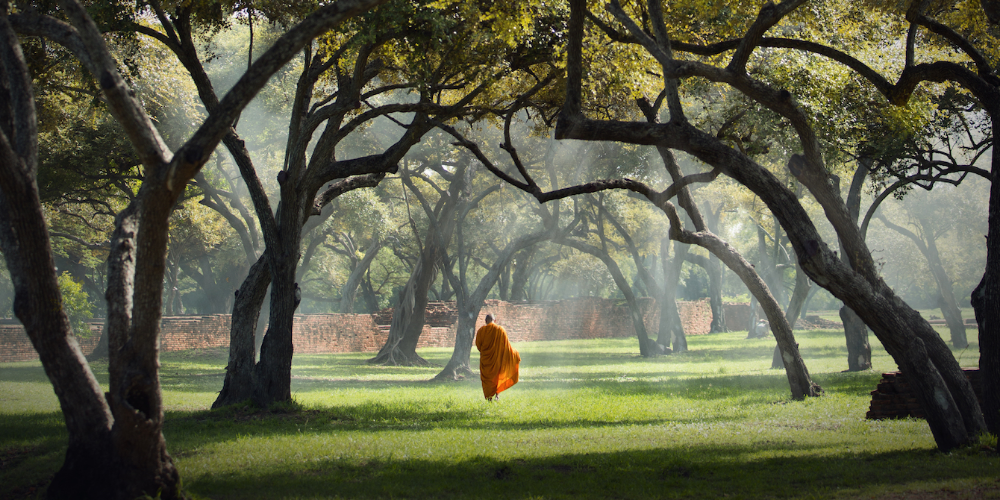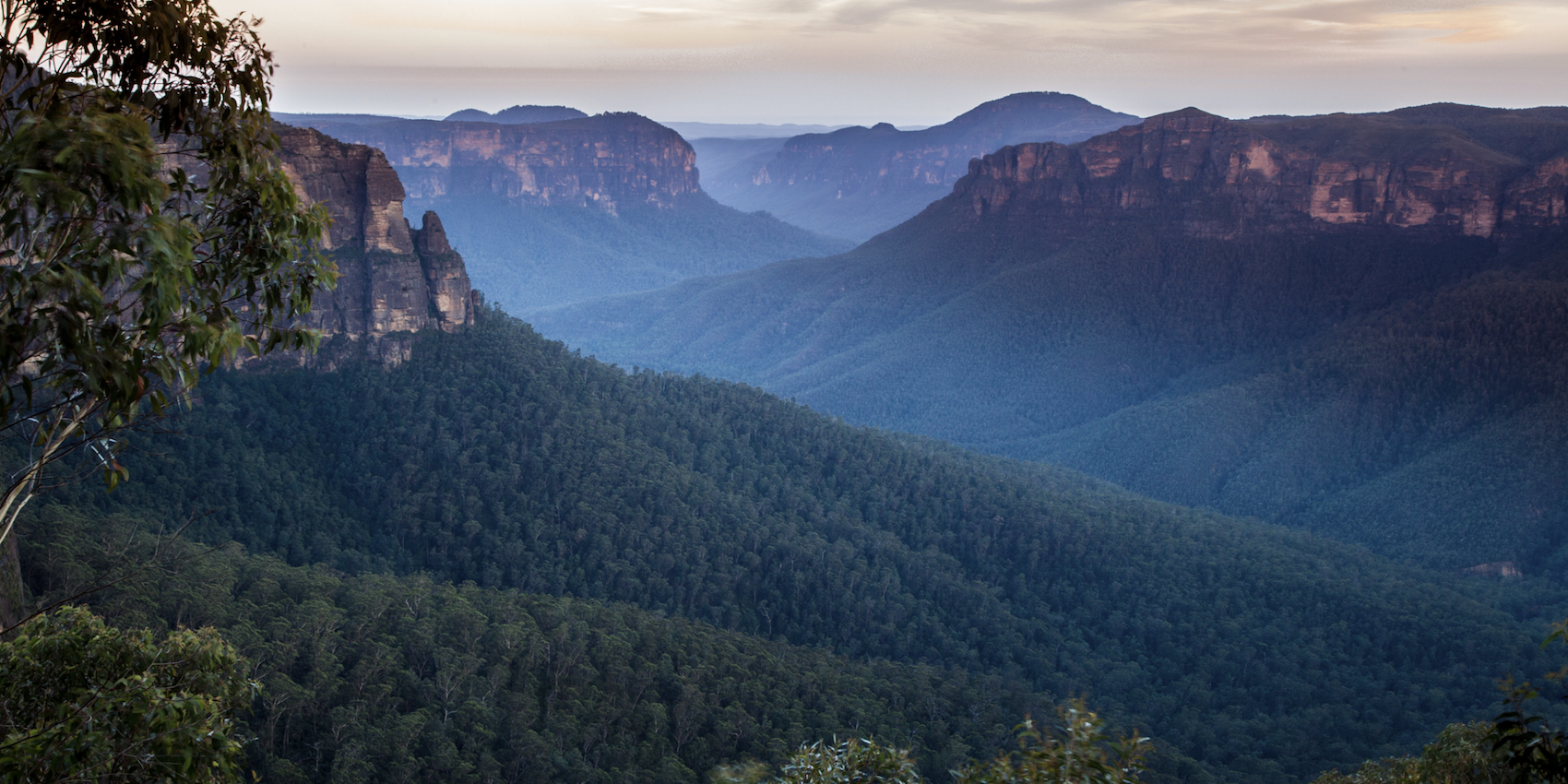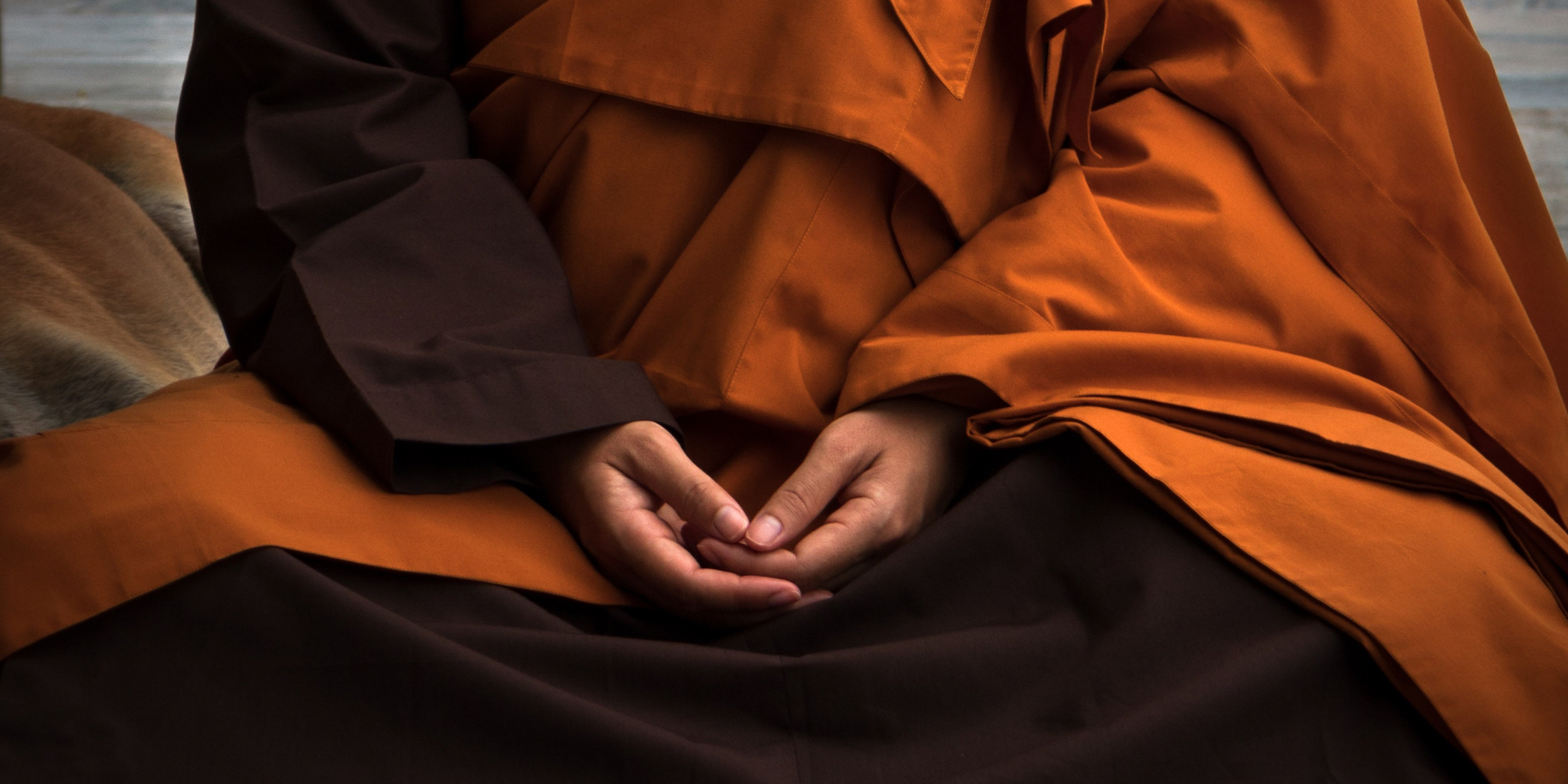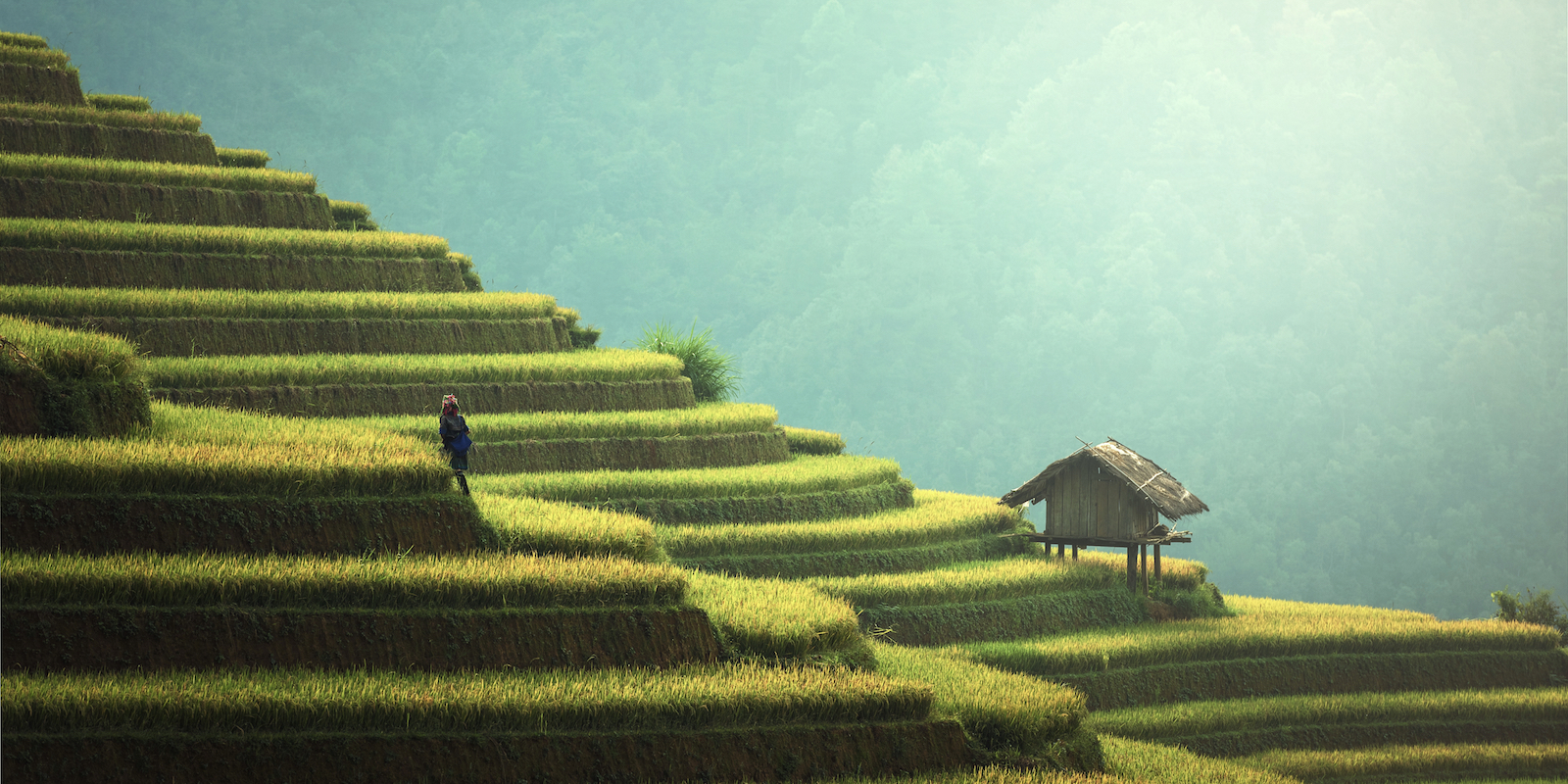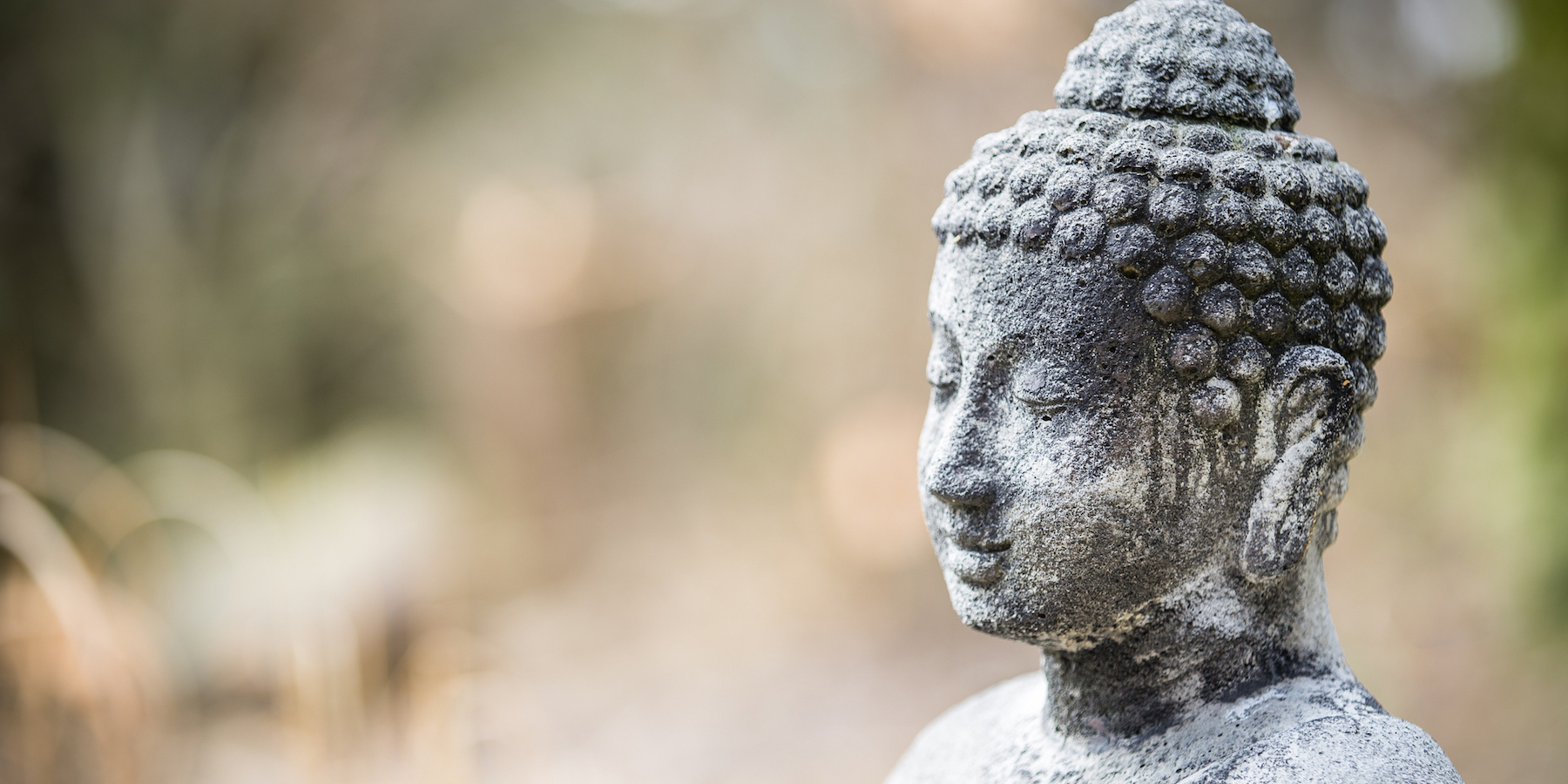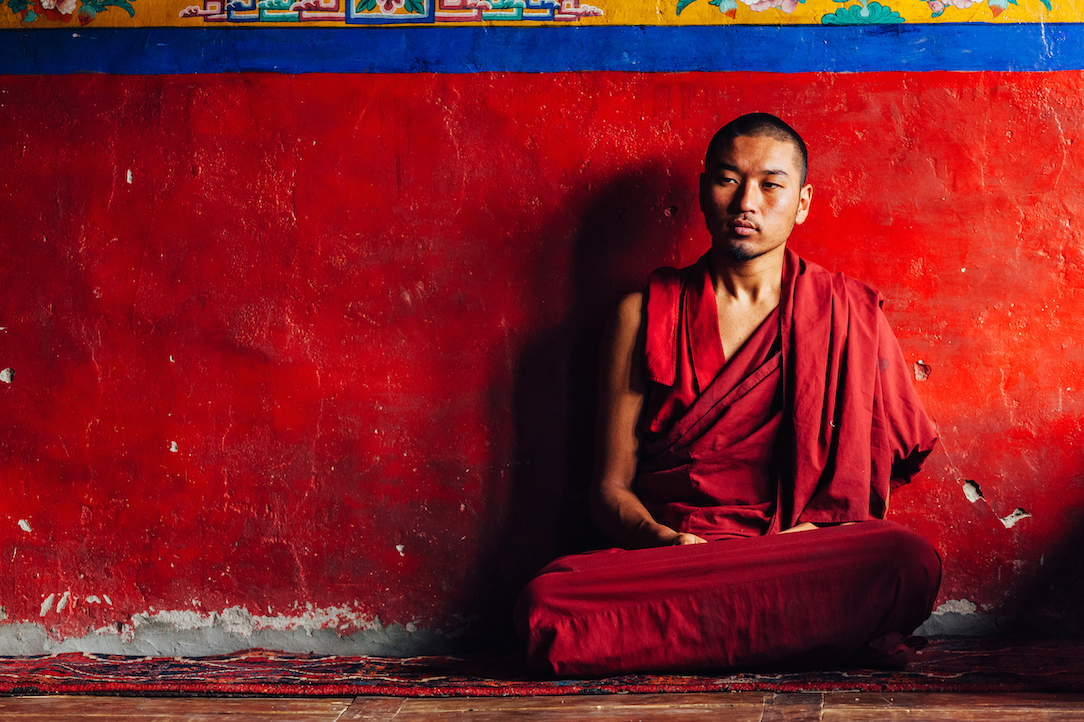In his new book Love and Rage: The Path of Liberation Through Anger, Lama Rod Owens shares his personal journey with rage. He frames his approach within accessible Buddhist philosophy and contemplative practice. In this excerpt of the book, Owens explores the interconnection of happiness and self-trust despite discomfort and suffering in our lives.
What Is Happiness?
I always say that I am not interested in people being Buddhist or meditators or engaged in any spiritual path in general. But what I am interested in is people living lives where they feel resourced enough to limit violence against themselves and others and to experience a sense of happiness. I am committed to supporting people to be happy because it has been my experience that happy people create less violence. I often think about the times when I have been violent and how unhappy I have been in those times.
It is not a privilege to be happy. When we experience happiness, we are not taking it away from someone else. Happiness is the natural state of our minds, as it holds space for all the material of our minds and our experiences, both the comfortable experiences as well as the uncomfortable ones, and everything in between.
Happiness doesn’t exist outside of ourselves. It is who we are. It is the essence of our minds. Many contemplative traditions seek to lead us to this essential truth about ourselves. In my practice, I often think about the metaphor of a cloudy day. Because the sky is overcast doesn’t mean the sun is not shining. A really dramatic experience of this can be seen on a plane flight as the plane takes off and ascends above the cloud level, breaking through to the intensity of sun radiating in the clear sky. Happiness is always there, but often I have to be reminded of that.
In my practice, happiness is this experience of contentment, connectedness, and balance. When I say happiness, I’m not necessarily referring to this euphoric experience that’s like being in a Disney cartoon where we’re just skipping down the road and humming a melody, and the sun is out and it’s raining candy. Euphoria is what most people think authentic happiness is; and thinking this, they feel barred from the experience, because this experience is so hard to bring about when their lives are so difficult. However, I’m not that interested in that kind of happiness. I’m interested in the level of happiness that is actually about us just being in our bodies or at least having an aspiration to be in our bodies, being connected, being sensitive, being in tune with the world around us despite how hard the world is.
Happiness doesn’t mean we are forcing anything away. It is this profound and revolutionary practice of allowing and accepting. When I say “allow,” it doesn’t mean condoning or celebrating what’s in your mind. It means that there is already material there, and how can I do the work of allowing it to be there? And when I do the work of allowing something to be there, then I begin to enter into a relationship with what is. I don’t have to like what I am allowing either, but I have to let it be there.
Happiness can abide with other things. We can be happy and struggle at the same time. Often I can experience happiness while at the same time experiencing sadness. Often when people think about happiness, they think that happiness is an eradication of discomfort. Rather, it is the holding of our discomfort in a spaciousness that makes it less likely for us to fixate on the discomfort and exaggerate it. But, if we’re really living our lives and being in tune with what we’re experiencing, there’s happiness that begins to surround the struggle.
Practicing happiness means that I am doing the work of trusting myself. When I am able to trust myself, I develop more wisdom in how to trust others. My happiness holds my suffering and the troubles of the world, and I can step out with compassion to confront the suffering of the world being held by my happiness. There is no magic here. It is staying with the truth of the relative while understanding that it is the liberation work with the relative that will help us earn our experience of the ultimate. None of this is comfortable or fun. Practicing dharma and revolution is not fun. It is complex and sometimes confusing.
In this recording, Lama Rod Owens talks about how mindfulness helped him be present with his experiences, developing an intimate connection to his own basic values and his basic self-worth.
- Returning To Who We Are Lama Rod Owens 1:35:19
Aspects of Happiness
Space
There is no happiness without mental spaciousness. Space is something that we do not need to create in our minds; it is naturally there if we can notice it. However, noticing space requires us to relax our fixation on the material in our minds. Relaxing the contracting opens up vision and sight, and we can notice that there has always been space around us. That space is the very heart of happiness. When we notice the space, the other material doesn’t go away, but you realize that you can hold everything without fixating on it. I love using the language of dancing. I think of living as dancing with all of the bullshit that arises for us. The dance is the expression of adapting, and we can’t do the dance of adapting without space. Happiness is the space in which we dance with even the toughest shit in our lives.
Trust
When I speak of trust and confidence, I am talking about taking refuge in my basic experience of myself. I trust myself. I trust that I have the ability to experience and feel. I trust that I have the ability to empathize. I trust my ability to change. I trust my ability to embody agency. I trust that I can discern the positive and constructive things the world can offer me as feedback that can help me grow through my suffering. I also trust that I can discern through the bullshit what the world is trying to tell me about myself that has nothing to do with my benefit. This trust in myself doesn’t mean that I’m okay all the time, but it does mean that when I am not okay, I can let myself not be okay and I can take care of that not-okayness. This trust is built upon a real acceptance of myself that is supported by intense gratitude. I have to let myself be sick in order to have the space to start working toward being well.
Connectedness
Happiness is an expression of connectedness. This means that I feel a part of things and people around me because I have the mental space to relax and open. When I am feeling disconnected, I begin to experience fear and isolation, and these are experiences that can lead to us committing all kinds of violence. When I am feeling connected, I am also engaging in empathy for my basic experience, as well as for the experiences of others. I am drawing near to these experiences, and I draw closer to others. I then enter into sympathizing or abiding with everything that arises, and then there is a kind of intimacy that emerges. The intimacy is born from just having the courage to dwell with our experiences.
Accepting
Acceptance is the energy of happiness. It is our work of allowing what is already present to be right where it is. Happiness isn’t about bypassing anything. It is about acknowledging what is present and leaning into it. When I let go of the constant pushing away of things that are not comfortable, then I find myself reinvesting that energy of aversion into giving space to the material that is uncomfortable. Happiness is found in the space around the difficult material, and over time we begin to discover the space within the difficult material. The difficult material is like a natural sponge. When we are able to get close to it, we see all these little pores that allow things to move in and out of it. Our difficult material is porous, and we can use our awareness practice to explore the pores and rest within the space there to experience some happiness in difficult situations.
Happiness and Joy
I often use the words “happy” and “joy” interchangeably in the same way I may use “anger” and “rage” interchangeably. Happiness and joy rise from the same conditions. However, there is a difference between the two. Happiness is an experience that can be really subtle and somewhat nuanced. It’s like turning on the heat in a cold room. Slowly the room will get warmer. You may not notice the growing warmth until you realize that you aren’t as cold as you were a while ago. Joy, on the other hand, is being in a cold room, and instead of turning on the heat, you walk over to the fireplace, build a fire, and instantly have a lot of heat. The heat may get really strong and distracting, but it won’t last, because the fire logs will burn down and the room will slowly get colder until you build another fire. Moreover, I understand joy as a natural state of my mind when I do the work of meditation to reveal that state. Happiness, on the other hand, is an emotion that I work to cultivate.
From Love and Rage: The Path of Liberation through Anger by Lama Rod Owens, published by North Atlantic Books, copyright © 2020. Reprinted by permission of publisher.

